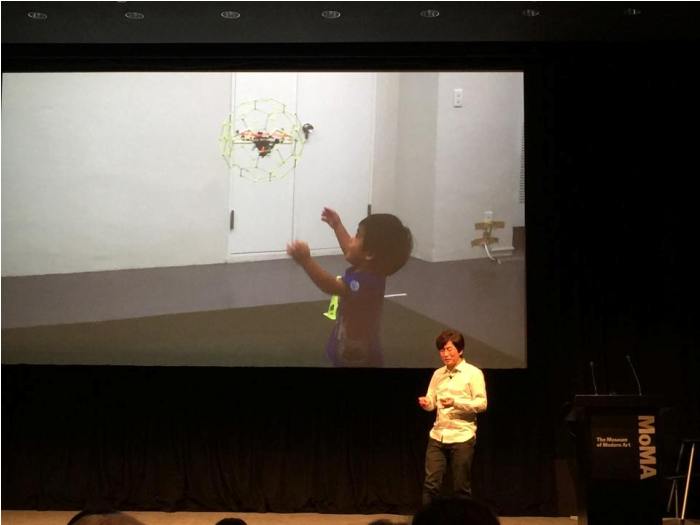Sony’s Hoverball Is a Quadcopter in the Size and Shape of a Bocce Ball

Image from Watanabe Nobuhiko via Facebook (https://www.facebook.com/nobuhiko.watanabe/posts/10204867555791334)
Sony may be failing financially but it is not yet running out of product ideas. It produced an eye ball like curved sensor that can make camera modules slimmer and address distortions on the corner areas. The Japanese company already demoed their virtual reality headset, which had received mostly favorable reviews from those who have tried it. Its company’s camera division has been churning out a good deal of advanced camera products including the IMX224MQV 1/3-inch 1.27MP CMOS sensor, which is touted as the world’s first sensor that can drive camera cars in a moonless night. This time, Sonys testing a hovering ball referred to as, unsurprisingly, the HoverBall.
A Hovering Ball
Detailed in the paper ”HoverBall: Augmented Sports with a Flying Ball” published for the 5th Augmented Human International Conference in Kobe, Japan, this new invention was created by researchers at the Sony Computer Science Laboratory and the University of Tokyo. The paper lists Kei Nitta, Keita Higuchi, and Jun Rekimoto of the University of Tokyo as authors.
The HoverBall employs quadcopter technology to be able to levitate and control it. It can be configured to serve a variety of purposes in the field of sports. It also integrates anti-gravity, proximity sensing, and remote manipulation technologies.
Specifications and Features
The HoverBall has a diameter of 90 millimeters and weight of 10 grams. This weight already includes the battery installed in the device. Yes, it is a battery-operated hovering ball that is intended to withstand the shocks or stress of getting kicked or bounced around just like an ordinary ball. The battery, however, is only capable of supporting flight for around five minutes. It will require a battery replacement or recharging to be used further. Its flights can be pre-programmed so it can move around autonomously but it can also be remotely controlled.
In terms of appearance, the HoverBall prototype being tested does not look like how you would expect a ball to look like. As mentioned, the device is basically a “quadcopter within a ball.” The ball is like a cage that protects the quadcopter, making it possible to handle the ball just like an ordinary ball while allowing air to flow in and out of it to enable flight or hovering.
The research team behind HoverBall is saying that it comes with surprise midair maneuvers that are bound to introduce a new level of spontaneity to game play (in games that involve balls) through “artificial physical laws” that abide by “imaginary dynamics.”
Purpose and Applications
The researchers who responsible for this new device created it mainly for sports. The flight or hovering feature is intended to compensate for differences in player abilities when playing ballgames. Children, elderly people, and those who have physical disabilities, for instance, can benefit from the maneuverability of the ball to make it easier for them to play certain ball games. Sony’s HoverBall can make games more inclusive for players with less than ideal skills or capability, according to Sony CSL deputy director Jun Rekimoto.
Availability
This interesting new sports gear, however, is not going to be bouncing off store shelves anytime soon. It is still undergoing more research and development efforts.The researchers still have to figure out a more viable solution on the suitable enclosure for the ball. At present, the HoverBall still has a “very open” design as the quadcopter inside it requires a lot of air moving in and out.
For the ball to become truly usable on the courts, something has to be done with the enclosure first to make it look like a real ball and to duplicate the actual feel of handling a real ball. The current design of the HoverBall is not yet suitable for use in actual contact sports. The researchersare thinking of producing something rugged and with even more powerful rotors to be able to support the weight of a more solid and heavier ball with a bigger battery.
